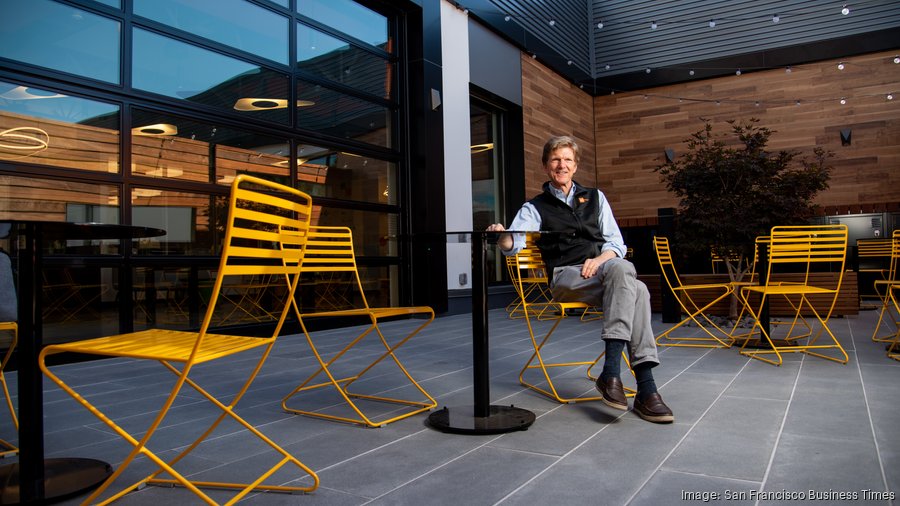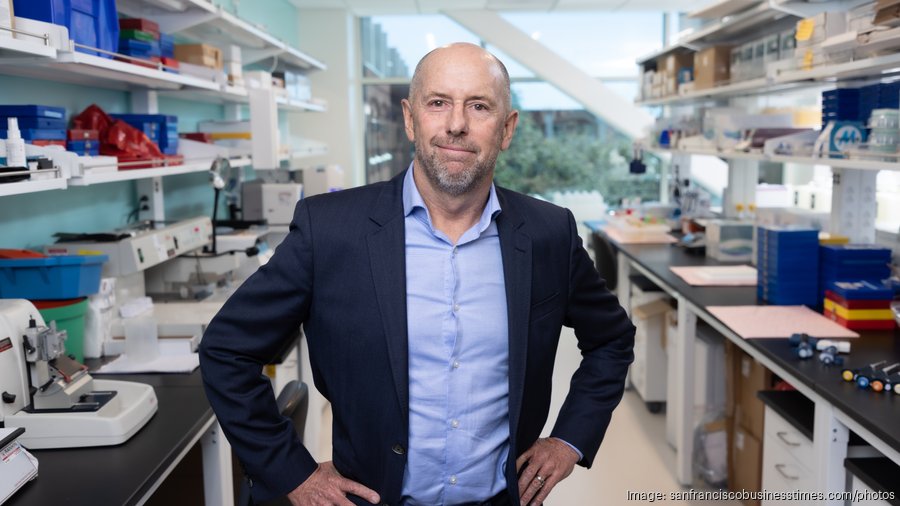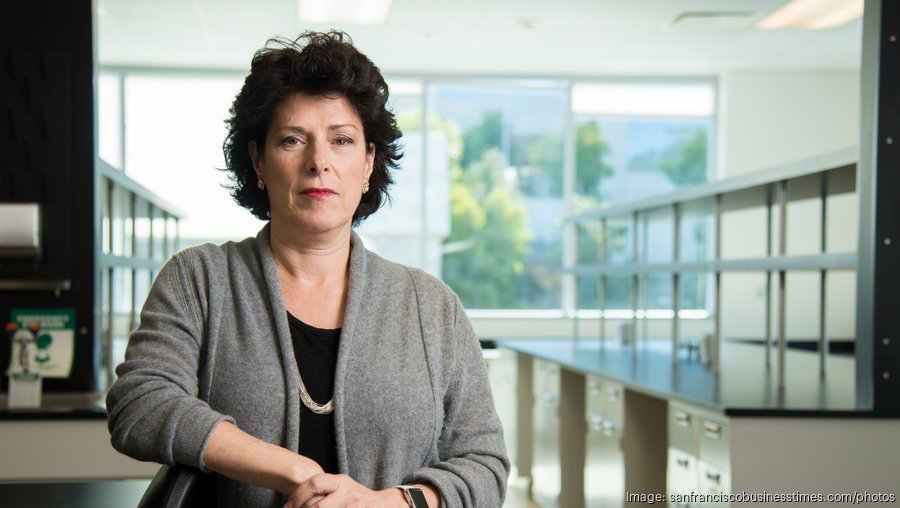For 10 years, the Bay Area life sciences industry has boomed.
Drug companies — makers of injectable biologic treatments as well as those churning out traditional chemistry-based drugs — have thrived at a never-before-seen intersection of groundbreaking science and unprecedented access to capital. The fervor has given rise to hundreds of new companies in the Bay Area and millions of square feet of space dedicated to new and expanding biotech ventures and Big Pharma companies looking to snag a little of the biotech mojo.
The decade’s dividend has been immense: New technologies, such as cell therapies, now promise to fix cancers by reengineering a patient’s own cells or those from a healthy donor. Other so-called immunotherapies, where drugs boost the immune system’s detection and destruction of cancer cells, have become standards of care.
What’s more, genetics is offering new insights into pathways researchers can take to battle diseases. Functional cures are available for hepatitis C. Gene-editing techniques, like CRISPR, promise to eradicate rare genetic diseases as well as more common disorders such as hemophilia and sickle cell disease.
It has been biotech’s golden age, much of it progressing after investors returned following their abandonment of the biotech industry in the wake of the Great Recession.
But now, despite all the promise and achievements, there is foreboding. Companies that raised hundreds of millions of dollars through venture capital and quick conversions to IPOs now are finding it tough to access more capital. Some are cutting costs or paring drug programs’ longer, riskier timelines while waiting to see if Big Pharma reacts to lower valuations by increasing mergers and acquisitions.
Biotech’s record expansion, many say, is over.
Under water
Whether this proves a funk, a big correction or a more sustained period of woe for the biotech industry, the landscape has suddenly turned bleak.
The Nasdaq biotech index has shed about a third of its value since its 2021 peak. More than 100 life sciences stocks — including at least a dozen of the nearly 150 public Bay Area biotech companies — are trading below their level of cash, equivalents and investments, making their businesses essentially worthless, at least on paper. And investors are asking biotech CFOs about their plans for cutting expenses and hoarding cash.
Hundreds of private life sciences companies in the region could face a funding “valley of death” in a protracted biotech downturn, unable to carry their drugs, devices or diagnostics from proof of concept to commercial translation.
It is a jolt for a generation of biotech companies that had never experienced the down side of a traditionally cyclical, capital-needy industry.
“It’s an inefficient system because these cycles go in and out in crazy ways,” said Susan Molineaux, the CEO of South San Francisco’s Calithera Biosciences Inc., a cancer drug developer.
Calithera, which was founded in 2010 and went public in 2014, pivoted last year after its marquee drug failed a mid-stage clinical trial in kidney cancer. It laid off about 30 people in February 2021 but eight months later bought two clinical-stage anti-cancer compounds from Takeda Pharmaceutical Co. Ltd.’s Millennium Pharmaceuticals unit.
Takeda took an equity stake in the company, but Calithera’s new strategy isn’t getting Wall Street’s love. At 40 cents per share at the end of the first quarter, its stock was valued lower than its $44.7 million in cash, equivalents and investments, which translates to about 46 cents per share.
Calithera will enroll Phase II trials for one of the former Takeda drugs, in a type of lung cancer, and another in a type of lymphoma. It is aiming to deliver data from the mid-stage studies in early 2023, relying on using simple blood tests to identify patients with genetic vulnerabilities to the cancers.
The company has enough money to get into clinical trials and report data early next year, “but we’re crossing a narrow bridge,” Molineaux said.
“When there’s a macro-contraction in highly innovative but highly risky businesses, everybody just gets contracted together,” she said.
Bay Area life sciences companies have laid off hundreds of employees over the past year. Some of those cuts are due to clinical failures, like the 500 employees shed by San Francisco-based Nektar Therapeutics Inc. last month after the late-stage flop of its cancer drug bempegaldesleukin, or the nearly 70 jobs cut at Redwood City’s Allakos Inc. in February after its drug lirentelimab failed a later-stage study aimed at patients with a rare stomach disease and an allergic condition in the esophagus.
“This is what biotech goes through in order to stay cutting edge and to not get bloated,” Molineaux said.
Additional belt-tightening is coming, executives warn, because antsy investors want assurances that companies can extend their cash to hit key milestones on the three-stage drug-development journey that can cost $1 billion and six to 10 years to complete.
In a way, the industry is a victim of its own success. Generalist investors have been attracted by the promise of cell therapy and other innovations over the past decade, most recently the emergence of Covid-19 drugs to treat the millions of people globally who have contracted the virus, or vaccines using messenger RNA, or mRNA, to prevent the virus’ spread.
That’s cold comfort for investors looking for a bottom or some sort of sign the bleeding has stopped. It hasn’t come yet.
Too big?
There still are strong stories to tell investors that may be sitting on the sidelines, said Ron Martell, the CEO of Jasper Therapeutics Inc.
The Redwood City company over the past two years has spun technology out of the lab of Dr. Judith Shizuru and Dr. Susan Prohaska at Stanford University and gone public with a $200 million blank-check merger and investment last fall. It plans to take its third program into clinical trials early next year.

Jasper’s monoclonal antibody would make it easier to condition patients with acute myeloid leukemia and myelodysplastic syndrome for bone marrow transplants as well as for severe combined immunodeficiency, a condition also known as “bubble boy disease.”
“Investors understand how the pathways look, how long it will take, how much it will cost to run trials and what the market looks like, and they can assign probabilities and models to discern a value for the company,” Martell said. “A lot of the companies struggling in this environment have not answered those questions.”
Others are relying on data to stay above the fray.
Nkarta Inc. used promising early results in April from two early-stage clinical trials of its off-the-shelf cancer cell therapies to raise $230 million via an upsized stock offering. Even Allakos, the company that cut 35% of its workforce, recently filed a “shelf registration” to sell $250 million of stock from time to time as it launches a Phase II study with hives patients and reports data in the third quarter from a late-stage study in a gastrointestinal tract illness.
Trials like those — if completed successfully — may lead to a faster recovery than the biotech industry’s last major dip a decade ago.
By the time the Great Recession-era biotech decline was over, more than one-third of public biotech companies were wiped off the board. Biotech-focused venture funds also closed as limited partners sought safety in industries that required shorter product development timelines, less money and less risk.
Capital slowly flowed back into biotech, helped by the Obama administration’s Jumpstart Our Business Startups, or JOBS, Act of 2012. That legislation lowered some reporting requirements for private “emerging growth” companies interested in going public.
In all, the number of public life sciences companies ballooned from about 125 a decade ago to more than 700, Molineaux estimated.
“It just seems too big,” Molineaux said of the sheer numbers.
Not all of those companies have survived. In fact, of the seven Bay Area life sciences IPOs in 2013, only cancer diagnostics company Veracyte Inc. of South San Francisco remains alive and independent.
Efficiency and opportunity
Whatever is ahead for the biotech industry, insiders say, the industry has the cash, innovation and efficiency-driving backbone technologies to withstand the decline. Bay Area biotechs as a whole are sitting on nearly $50 billion in cash and equivalents.
And not all money players have abandoned the sector.
In early May, OrbiMed Advisors, which is the largest single investor, said it plans to raise three new funds totaling $4.75 billion. Over the past two years, several other VCs have cumulatively raised billions of dollars more. That is money that could help young biotechs weather tough times.
The funds aren’t just sitting around; they are being put to use.Nuvig Therapeutics Inc. of Redwood City, for example, recently disclosed a $40 million Series A round to treat autoimmune diseases without suppressing the immune system, and Kriya Therapeutics Inc. of Redwood City raised $270 million, just seven months after announcing a $100 million round, to deliver a range of gene therapies.
“We have a good runway into the clinic,” said Nuvig’s Pamela Conley, a first-time CEO after 30 years experience at COR Therapeutics, Millennium, iPierian and Portola Pharmaceuticals. “As [the industry’s] learned from the past, it’s always good to be ready to raise money when the opportunity presents itself.”
To Doug Crawford, the managing partner of venture capital firm Mission BioCapital, the future remains bright.
Crawford, a self-described Pollyanna, helped build out a series of incubators through the University of California’s QB3 institute, which matched academic innovators with company builders. He works closely with MBC BioLabs incubators in San Francisco and San Carlos.
“I’m convinced that when we stand back and look at the chart 50 years from now, we’ll barely be able to see this in it,” he said.
Biotech’s next wave, Crawford said, will be driven by the efficiency it gained over the industry’s protracted boom. Instead of a dearth of lab space driving young companies to burn their cash by locking in long-term leases, the rise of biotech incubators makes real estate variable, he said, and flexible contract research organizations mean those companies don’t need to invest as heavily into equipment.

The entire drug-development process, he said, is streamlined thanks to technology improvements and new ways of doing clinical trials.
Curebase Inc. of San Francisco, for example, is using a combination of telemedicine and brick-and-mortar sites to improve the efficiency and diversity of clinical trials. It raised a $40 million Series B, it said in early May. Meanwhile, LiVeritas Biosciences Inc. of South San Francisco recently launched an outsourcing service for mass spectrometry, an analytical tool that measures materials and identifies unknown compounds within a sample.
“It’s disruptive technology in biopharma and it needs to be democratized,” said Lieza Danan, the founder and CEO of LiVeritas, which launched in February 2020. “Technology will change the game in drug development.”
The industry’s new-found efficiency could make dips shallower and shorter, Crawford said.
“It’s hard to say the party’s over,” he said. “My dad told me, ‘When times are good, people think they’re always going to be good, and when times are bad, people think they’re always going to be, and they’re always wrong.’ They are dead wrong.”
Martell, the Jasper Therapeutics CEO, sees opportunity ahead. Investors are willing to put their money to work, he said, “they’re just being more discriminating.”
Separate from his roles at Jasper and other companies, Martel and his team are looking at potentially rolling up undervalued companies, companies with similar therapeutic targets or companies without a there there.
“In the past seven to 10 years, we’ve seen incredible tools, like mRNA for vaccines, therapies in immuno-oncology. We’ve seen the ability to create all of these different types of therapies, and what we also have is a lot of companies that have tools, that found something unique” he said.
“But is that a company? Just because you’ve identified a target doesn’t mean that’s a viable company in the long term.”
Now it’s a matter of timing, strategy and finding willing partners to bring companies or assets together, said Martell, whose career has spanned 35 years at Genentech and a number of other Bay Area life sciences companies.
“This is a process that will take a while,” he said. “We’re not focusing on find a bottom but the right combination. If you’re trying to wait for the bottom, you may miss some of these things.”
Seeding the booms
Biotech has always been reliant on the Next Big Thing: Scientific advancements that open doors to new opportunities. That was true in the decadelong run-up — and remains true looking forward.
What boomed?
- CAR-T/Cell therapy
- Immunotherapy
- mRNA
- Gene therapy
What’s emerging?
- Digital health
- AI drug discovery and development
TIMELINE
2012
Cancer stem cells developer OncoMed Pharmaceuticals files for an IPO, tapping the Jumpstart Our Business Startups, or JOBS, Act, which allowed “emerging growth” companies to drop various SEC reporting requirements; it doesn’t execute the IPO until more than a year later, but its initial filing was one of the first to use the JOBS Act
Three projects supported by California’s taxpayer-backed stem cell research reach clinical trials
Cortexyme is founded, looking at a bacterial cause and treatment for Alzheimer’s Disease; its drug fails a clinical trial in 2021
FDA formally withdraws approval of Genentech’s Avastin for breast cancer
Pleasanton’s 10X Genomics is founded, advancing single-cell sequencing technology to get a closer look at cellular differences
2013
FDA approves Gilead’s hepatitis C Sovaldi, which is the first to offer a functional cure against the disease; Gilead had acquired the drug in its $11 billion buyout of Pharmasset in early 2012
A stealthy company emerges with a 29-year Stanford dropout as CEO, an all-star board steeped in Washington, D.C., connections and promises to diagnose various diseases with a drop of blood from a single fingerprick; within three years, Theranos and its $9 billion valuation are kapoot and CEO Elizabeth Holmes and President Sunny Balwani are charged with fraud
Google backs aging disease company Calico, led by former Genentech CEO Art Levinson, setting off a broader push to find treatments to help people live better longer
Synthetic biology company Twist Bioscience is founded to “write” DNA for its research customers
2014
BioMarin Pharmaceutical and others push toward clinical trials of gene therapies, potentially offering one-shot-and-done fixes for genetic diseases ranging from rare diseases to hemophilia A
2015
Four-year-old Global Blood Therapeutics of South San Francisco goes public, feeding its quest to produce a sickle cell disease treatment; its Oxbryta is approved by the FDA in 2019
2016
Vir Biotechnology is founded to tap new technologies to, like RNAi and CRISPR, to develop infectious disease treatments faster; along with GlaxoSmithKline, it wins approval of an early monoclonal antibody treatment against Covid-19
Tobira’s hope to conquer the fatty liver disease NASH crashes with the failure of a late-stage drug trial, but Allergan buys the company for up to $1.7 billion; more companies join the dash for NASH, others drop out
San Carlos’ Lion Biotechnologies, later known as Iovance, looks to harness cancer-killing white blood cells called tumor-infiltrating lymphocytes as a cell therapy treatment
2017
Gilead acquires Kite for $11.9 billion; within two weeks, Kite wins FDA approval as the second chimeric antigen receptor T cell, or CAR-T, treatment against a type of lymphoma
Kite’s principals start Allogene Therapeutics to create off-the-shelf cell therapies for cancer, potentially cutting the time it takes to treat patients from weeks to hours
Denali Therapeutics founded, signifying a new biopharma push into brain diseases, such as Alzheimer’s
2018
Nektar cuts a potential $3.6 billion deal with Bristol-Myers Squibb to combine BMS’s cancer immunotherapy Opdivo with Nektar’s drug targeting IL-2, a cytokine in the immune system that activates and mobiles cells to fight cancer; late-stage trials flop and Nektar eventually says it will lay off 500 people
2019
Zymergen signals the growth of synthetic biology, especially in the East Bay, as it takes more than 300,000 square feet in Emeryville; the company ultimately launches a half-billion 2021 IPO but its forecasts for an environmentally friendly, foldable film produced by microbes for smart phones are too ambitious and it rejiggers its plans and lays off hundreds of people
Antibiotic drug developer Achaogen, which had won FDA approval of its first drug 10 months earlier, files for bankruptcy protection — a sign that ways of reimbursing antibiotics aren’t keeping up with innovation
2020
UC Berkeley biochemist Jennifer Doudna shares the Nobel Prize for her role in discovering and developing the CRISPR-Cas9 gene-editing technology
Gilead wins the first FDA emergency authorization — and eventually full approval — of remdesivir, or Veklury, against Covid-19; dozens of other Bay Area companies turn their attention to therapies and diagnostics to track and treat the SARS-CoV-2 virus
2021
CRISPR’s commercial potential shines through Brisbane’s Mammoth Biosciences, Emeryville’s Metagenomi, Alameda’s Scribe Therapeutics and others push forward with their work
2022
Emeryville synthetic biology company Amyris, initially spun out of UC Berkeley in 2003 to develop malaria treatments and then environmentally friendly plane fuels, continues its pivot to consumer products with opening of big fermentation plant in Brazil for molecules for skin care, hair care, cosmetics and more
`

GENE THERAPY PIONEER PREPARES TO WEATHER THE DOWNTURN
Dr. David Kirn has seen a lot of great technology and a lot of great science, and his nearly three decades of biotech experience tells him they aren’t enough by themselves.
“The external ecosystem has to be right,” said Kirn, the co-founder and CEO of 4D Molecular Therapeutics Inc.
The journey of Kirn and his 140-employee Emeryville company is emblematic of biotech’s decade-long boom and the questions even mature companies face as the boom goes bust and companies try to push into later-stage studies that can cost tens, if not hundreds, of millions of dollars.
4DMT, as it’s shorthanded, started just as the public markets began welcoming back young biotech companies in 2013. The Great Recession had caused several biotech companies and their venture capital supporters to close shop because investors didn’t want to plunk down cash for a risk-filled, years-long, possible return years later than they could get in the tech industry.
4DMT rode the wave of newfound investor interest, especially in gene therapies that offer potential one-shot-and-done fixes to genetic diseases. The company netted $175 million from angel and, eventually, venture investors and grossed another $222 million in an oversubscribed December 2020 initial public offering. It has built a pipeline of five experimental products, including gene therapies for eye diseases, dystric fibrosis and a rare, multi-organ condition called Fabry Disease.
It’s not an easy field. Filling the gap of an underperforming or absent gene, gene therapies have offered much promise and much disappointment over the past 25 years: patients and doctors are thrilled by the possibility of genetic rebuilds and investors salivate over potential seven-figure prices, but the durability and safety of the treatments have been intermittently questioned.
Kirn has seen promising companies come and go while trying to develop the best viral vectors — harmless, hallowed-out viruses that deliver gene therapies — since he joined Onyx Pharmaceuticals in 1994 after a medical oncology fellowship at the University of California, San Francisco. At Onyx, he developed viral vectors that lead to the production of proteins found on tumor cells so the immune system would be stimulated to identify and attack cancer.
He continued his oncolytic virus immunotherapy work at Novartis AG and Biogen Idec before founding and leading Jennerex Biotherapeutics, attempting to build a platform for cancer immunotherapy treatments using oncolytic viruses.
“The economy was in the tank and no pharma yet believed in gene therapy,” he said.
Kirn “brute-forced” the company forward, however. With small, regional partnerships and angel investors in Canada and Korea, Jennerex took a drug into mid-stage clinical trials.
By the time of Jennerex’ buyout by SillaJen Inc. for up to $150 million was announced in 2013, the timing for a new type of gene therapy company was as good as it had ever been.
4DMT licensed pioneering research by David Schaffer at UC Berkeley that tapped “directed evolution” to build a better delivery vehicle for gene therapies. The underlying idea of directed evolution is to steer proteins or nucleic acids toward a specific target, in this case to the capsid, or protein shell, of a common, harmless virus called adeno-associated virus, or AAV.
The high-throughput system accelerates the process of natural selection through biological engineering and screening to identify versions of AAVs with the most desirable characteristics for this or that disease.
In short, Kirn said, the new AAV delivery vehicles promise better efficacy and safety with lower doses and a lower cost of goods.
“AAV, once it’s into the cell, has evolved to get rapidly to the nucleus,” he said, noting that another delivery vehicle, called lipid nanoparticles, have to build in that capability.
4DMT’s platform generated excitement among angel investors, and the company inked multiple early-stage pharma partnerships. By 2016-17, it had proof of its concept and multiple potential treatments in its pipeline to line up a $90 million Series B round led by Viking Global Investors.
By the time of 4DMT’s IPO, the excitement of gene therapy was returning through Spark Therapeutics, which Genentech parent Roche bought in early 2019, and AveXis, bought by Novartis in spring 2018 and now called Novartis Gene Therapies.
What’s more, the Jumpstart Our Business Startups, or JOBS, Act of 2012 — just a year before 4DMT was formed — laid out rules for “emerging growth” companies to more easily go public.
Biotech company valuations continued to grow over the next several years, and as generalist investors rushed into the sector with the emergence of new technologies, such as mRNA, in Covid-19 vaccines, valuations soared.
“Lots of IPOs happened and you wonder if the quality was there for all of these companies, a lot of them preclinical,” said Kirn, who also is the co-founder and a board director of the Life Sciences Entrepreneurship Center at UC Berkeley.
And while early gene therapy players did relatively well with low-hanging fruit, such as the hemophilia and spinal muscular atrophy, investors were doubting the ability of old-school AAVs to carry larger payloads for diseases with larger populations.
“Large-market diseases need better vectors,” Kirn said. “Directed evolution evolves the capsid in any way we like for any particular disease.”
What’s more, some gene therapy companies were hit with clinical holds by the Food and Drug Administration as some patients died in studies.
After its stock rose within three months from its $23-per-share IPO price to more than $55, 4DMT’s stock now trades near the bottom of its 52-week range, around $9 per share.
Last October, after releasing early results of a Phase I/II trial in Fabry Disease and updating its program in the blinding eye disease choroideremia, the company the next month raised $111 million in a follow-on offering. The market has tanked since then, with the NASDAQ Biotechnology Index shedding nearly a quarter of its value since the start of this year.
“We could feel things really shift,” Kirn said. “(Investors were) much more cautious. We threaded that needle.”
The company, with an accumulated deficit of $233 million at the end of the first quarter, had cash, equivalents and marketable securities of $284.5 million. That is enough cash to last through the end of 2024, Kirn said, giving 4DMT time to push forward its ophthalmology trials of its treatment 4D-110 in choroideremia, 4D-125 in X-linked retinitis pigmentosa, a genetic disease that damages light-sensitive cells in the retina, and 4D-150 in wet age-related macular degeneration.
It also is continuing with clinical trials of 4D-310 in Fabry Disease and 4D-710 in the fatal lung disease cystic fibrosis.
“We have time to put our head down,” Kirn said.
